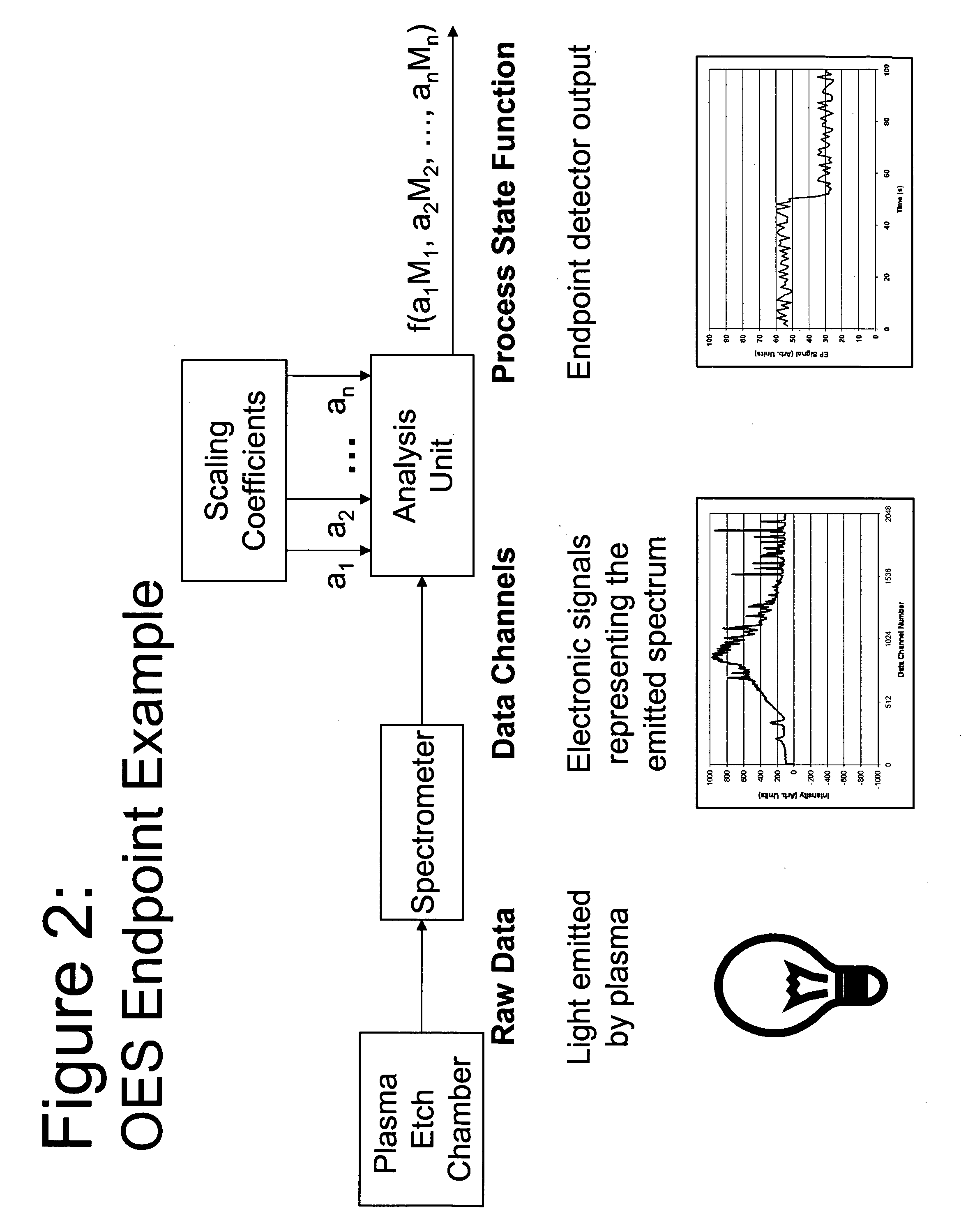Process change detection through the use of evolutionary algorithms
a technology of process change and evolutionary algorithms, applied in process and machine control, adaptive control, instruments, etc., can solve problems such as the increase in the number of data channels that must be monitored, the inability to generate a single data channel signal sufficiently above the system noise level, and the increase in the number of processes
- Summary
- Abstract
- Description
- Claims
- Application Information
AI Technical Summary
Benefits of technology
Problems solved by technology
Method used
Image
Examples
Embodiment Construction
[0038] We disclose a means of generating directly optimized process state functions for the detection of process changes through the use of an evolutionary computing technique using an algorithm such as a genetic algorithm.
[0039] In biology, it is a generally accepted principle that in response to competitive pressures, organisms become more adapted to their environment through the process of evolution. Those organisms that successfully reproduce are judged “fit” for that environment. Those organisms that fail to reproduce can be thought of as “unfit” for that environment. As there are often many potential solutions to a problem, there may be several genetic traits that enabled the parents to reproduce. Through combination of their respective genetic traits, it is likely reasonable that some combinations of “fit” parents will produce offspring that may be potentially even more “fit” which is also referred to herein as a fitness function. It is also a possibility that a random mutat...
PUM
| Property | Measurement | Unit |
|---|---|---|
| Dielectric polarization enthalpy | aaaaa | aaaaa |
| Electrical conductivity | aaaaa | aaaaa |
| Scaling law | aaaaa | aaaaa |
Abstract
Description
Claims
Application Information
 Login to View More
Login to View More - R&D
- Intellectual Property
- Life Sciences
- Materials
- Tech Scout
- Unparalleled Data Quality
- Higher Quality Content
- 60% Fewer Hallucinations
Browse by: Latest US Patents, China's latest patents, Technical Efficacy Thesaurus, Application Domain, Technology Topic, Popular Technical Reports.
© 2025 PatSnap. All rights reserved.Legal|Privacy policy|Modern Slavery Act Transparency Statement|Sitemap|About US| Contact US: help@patsnap.com



